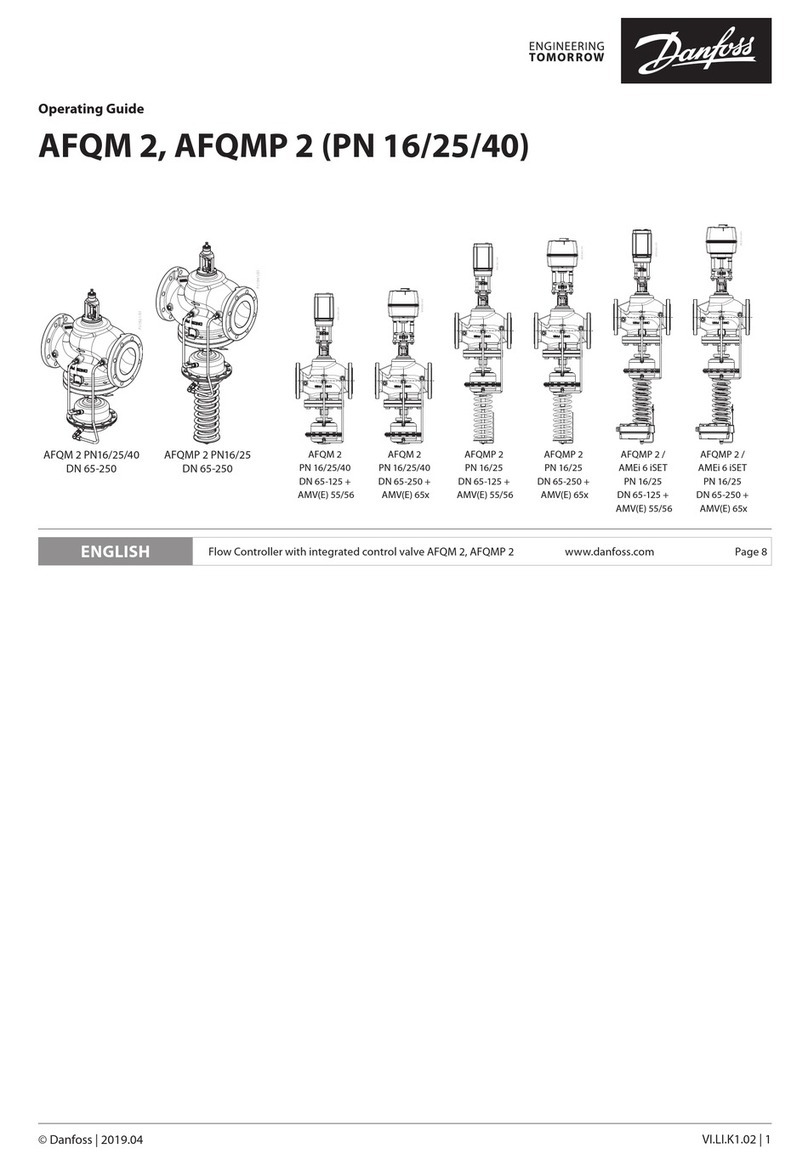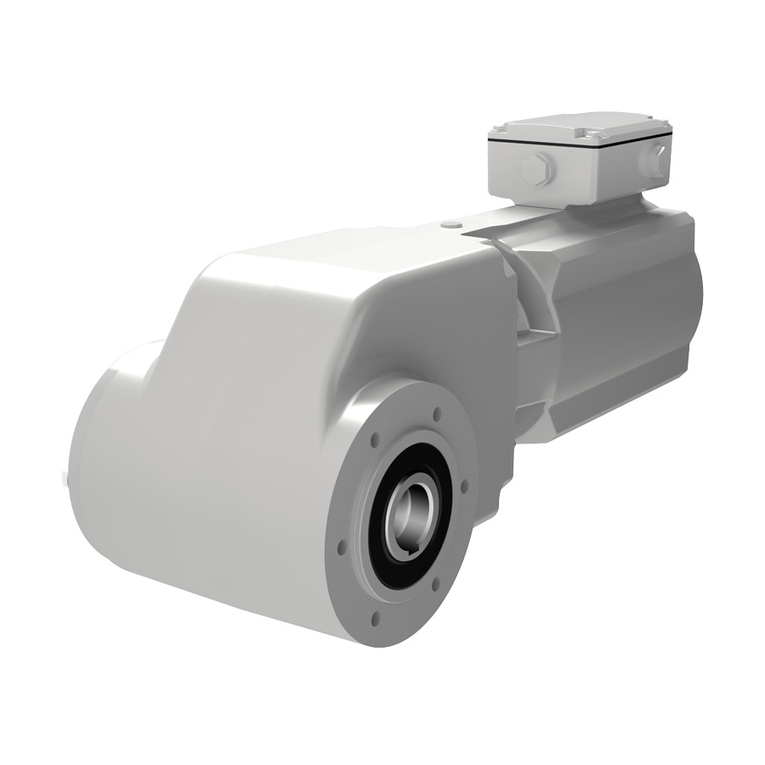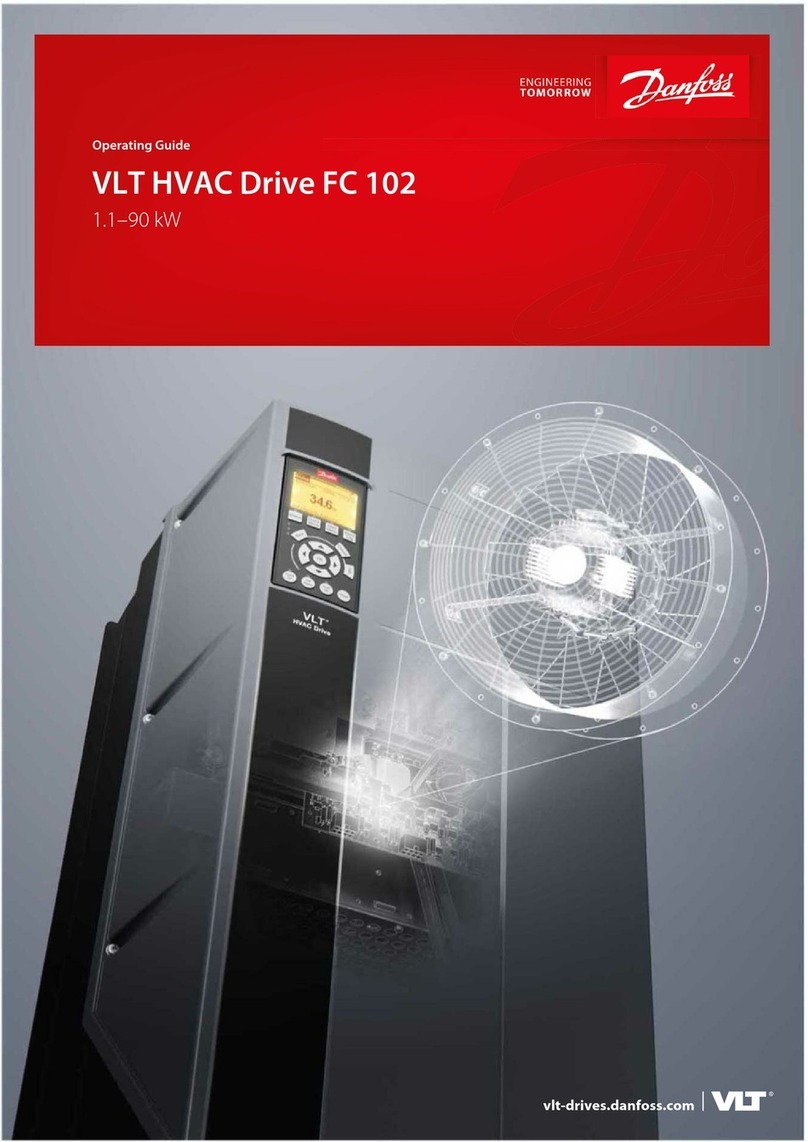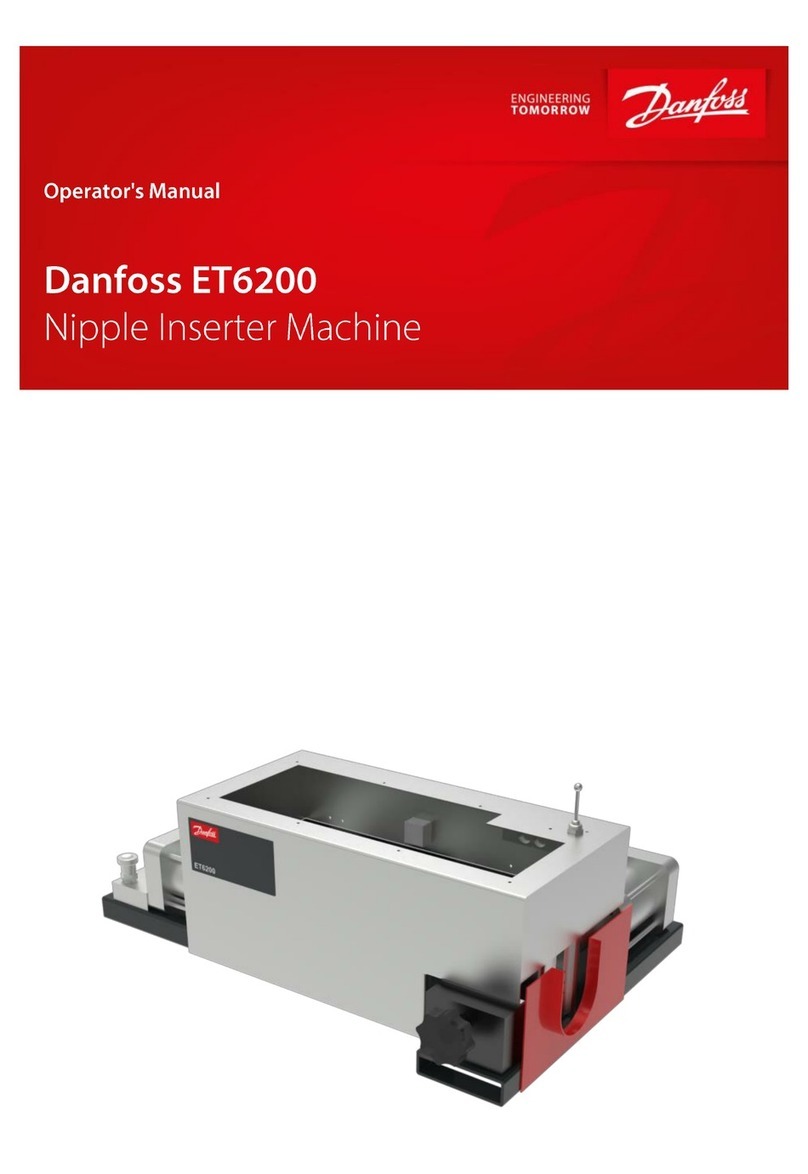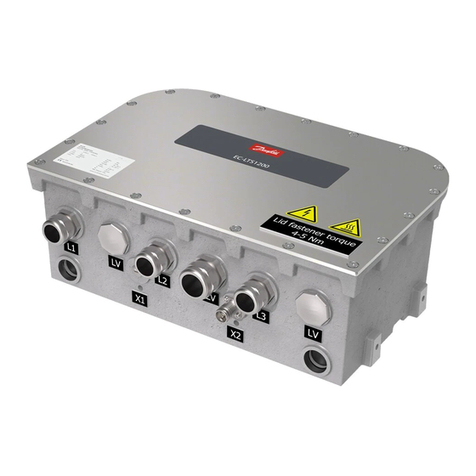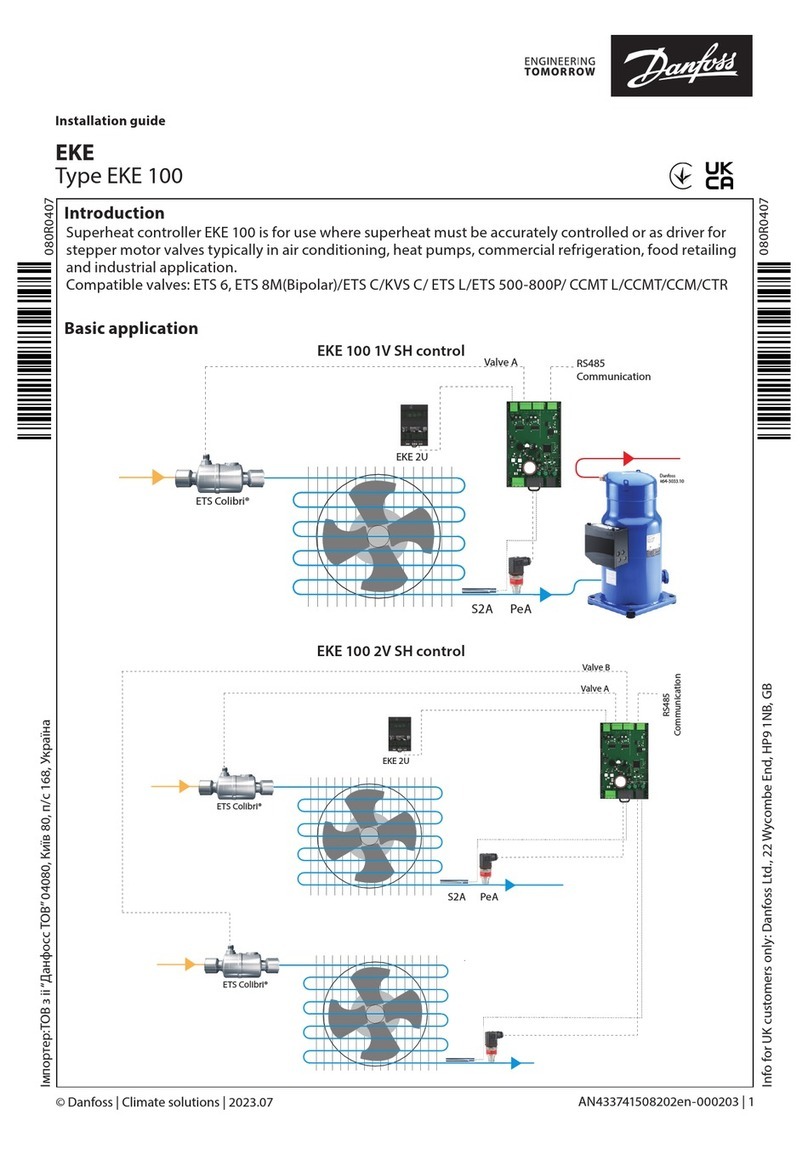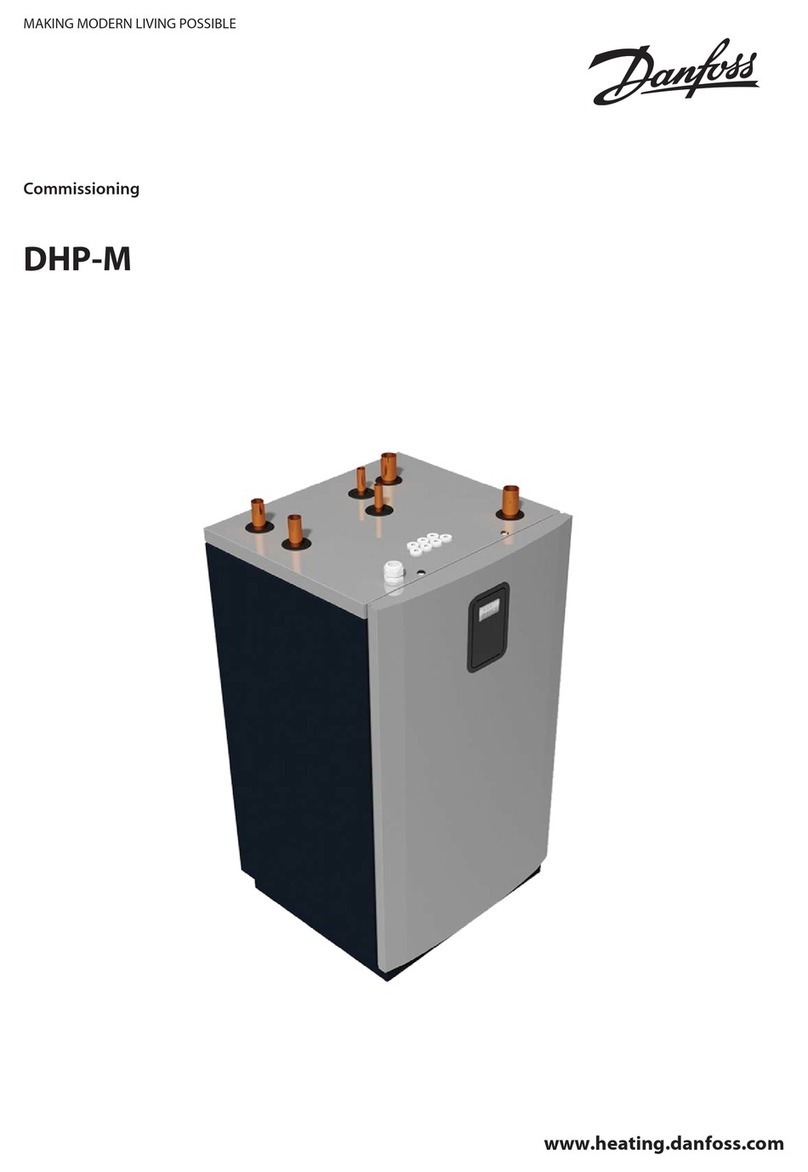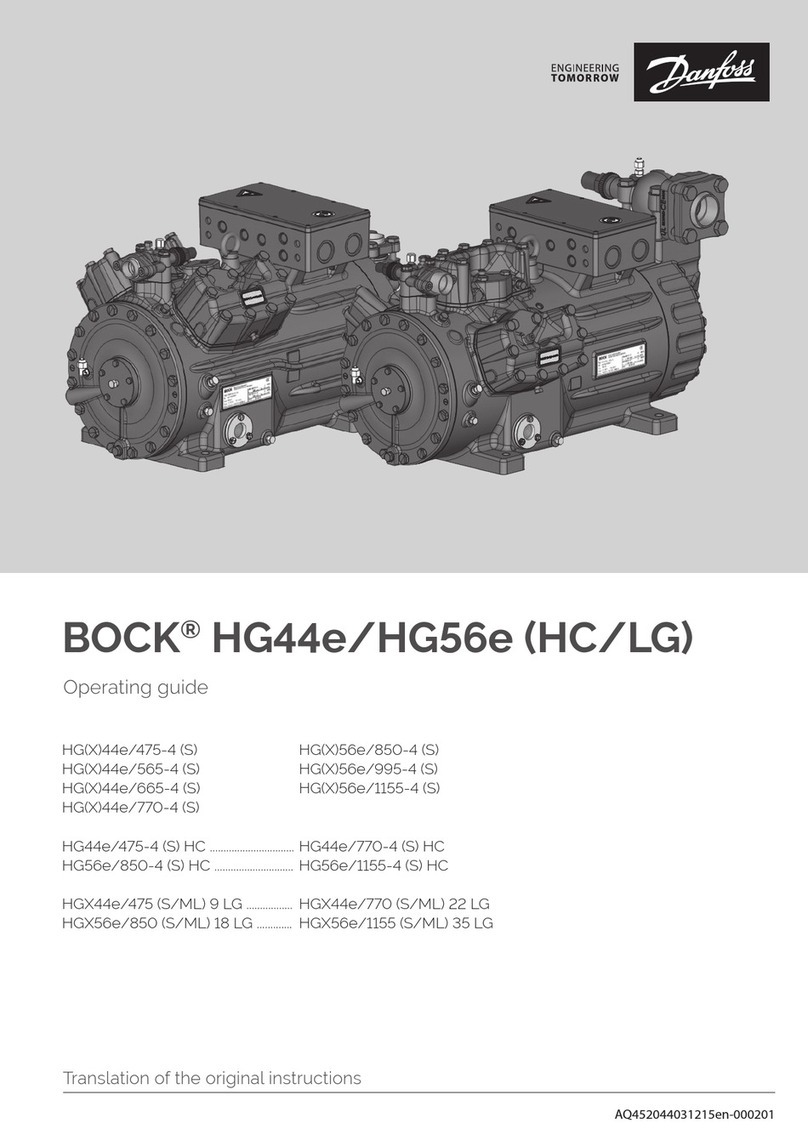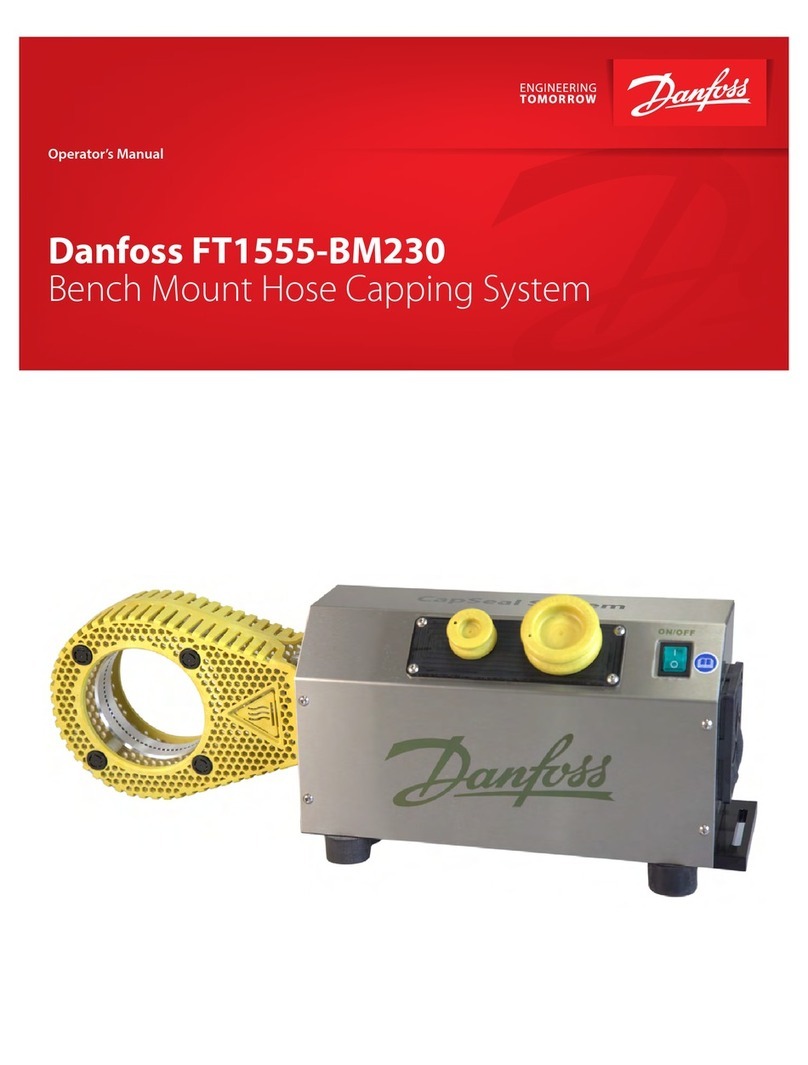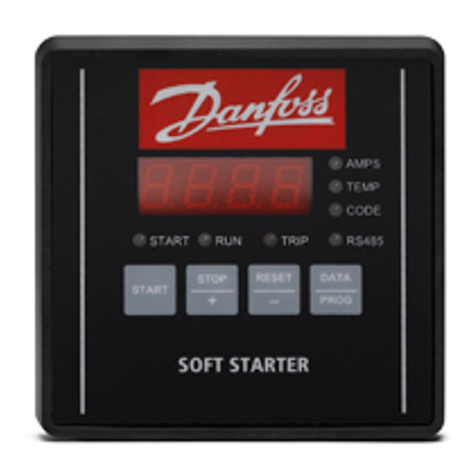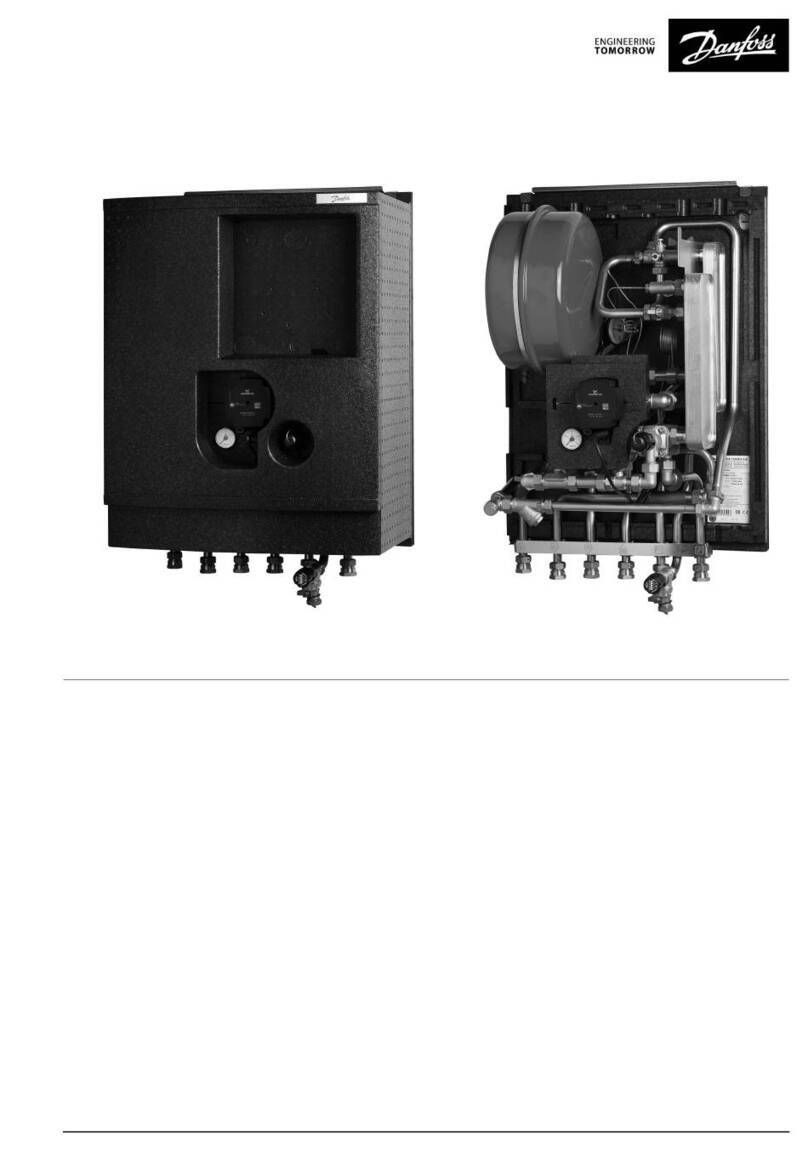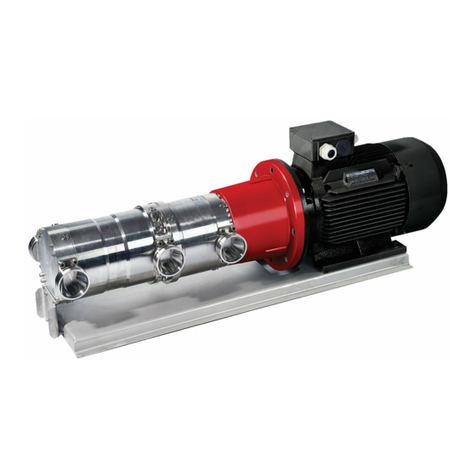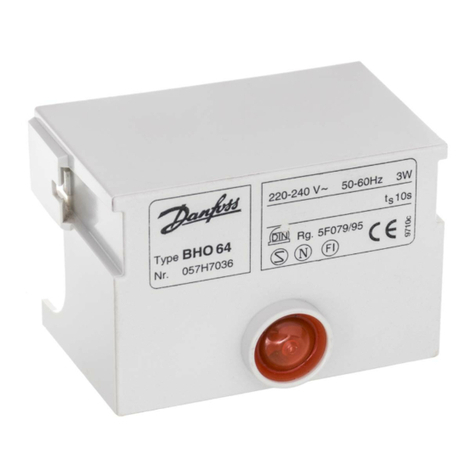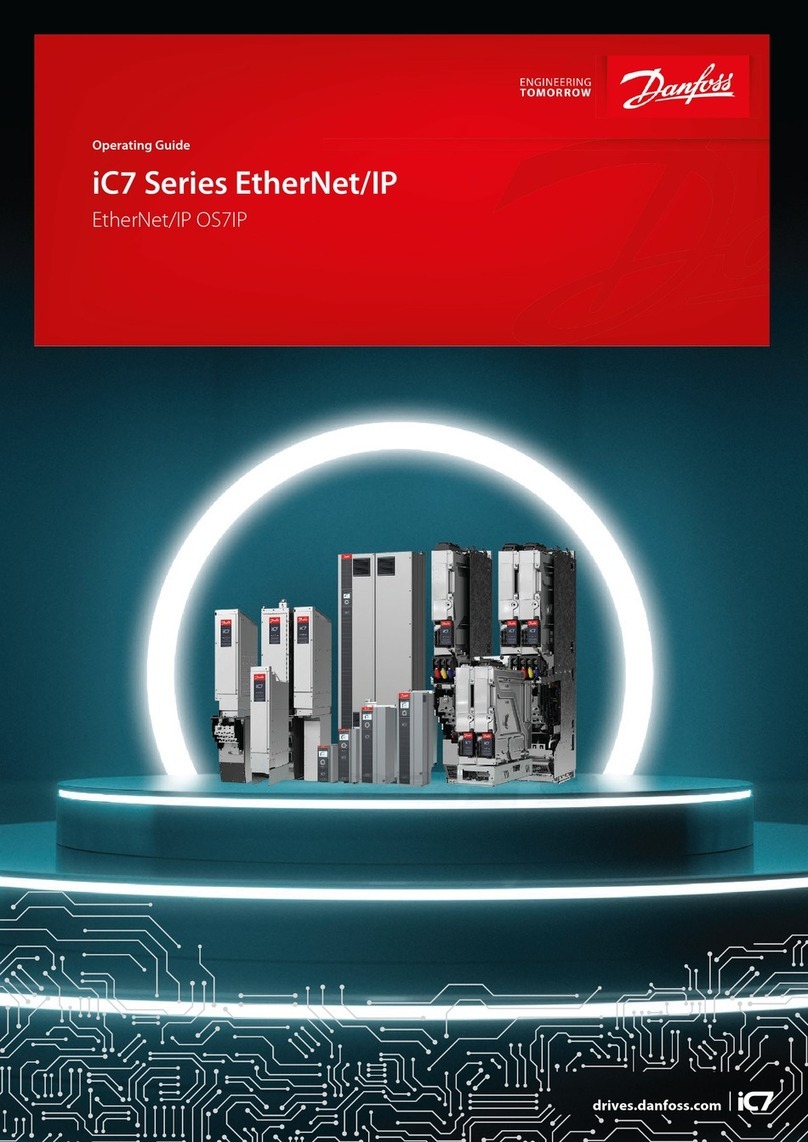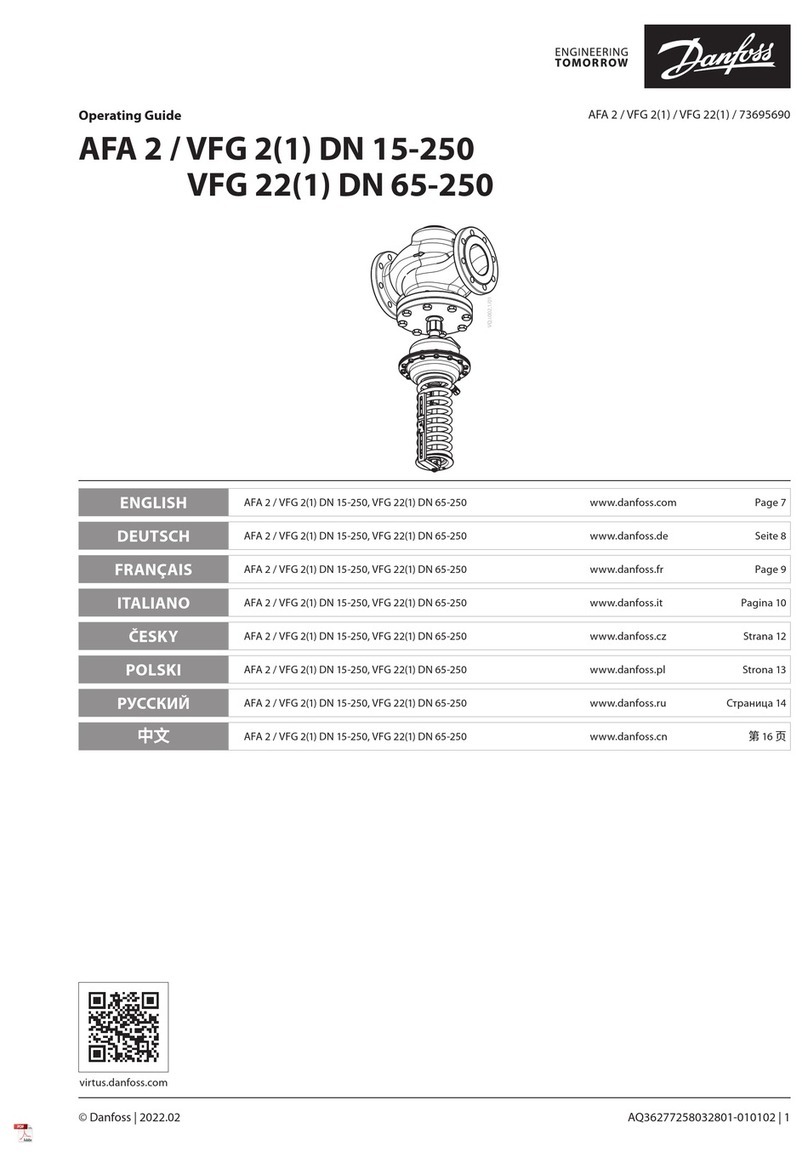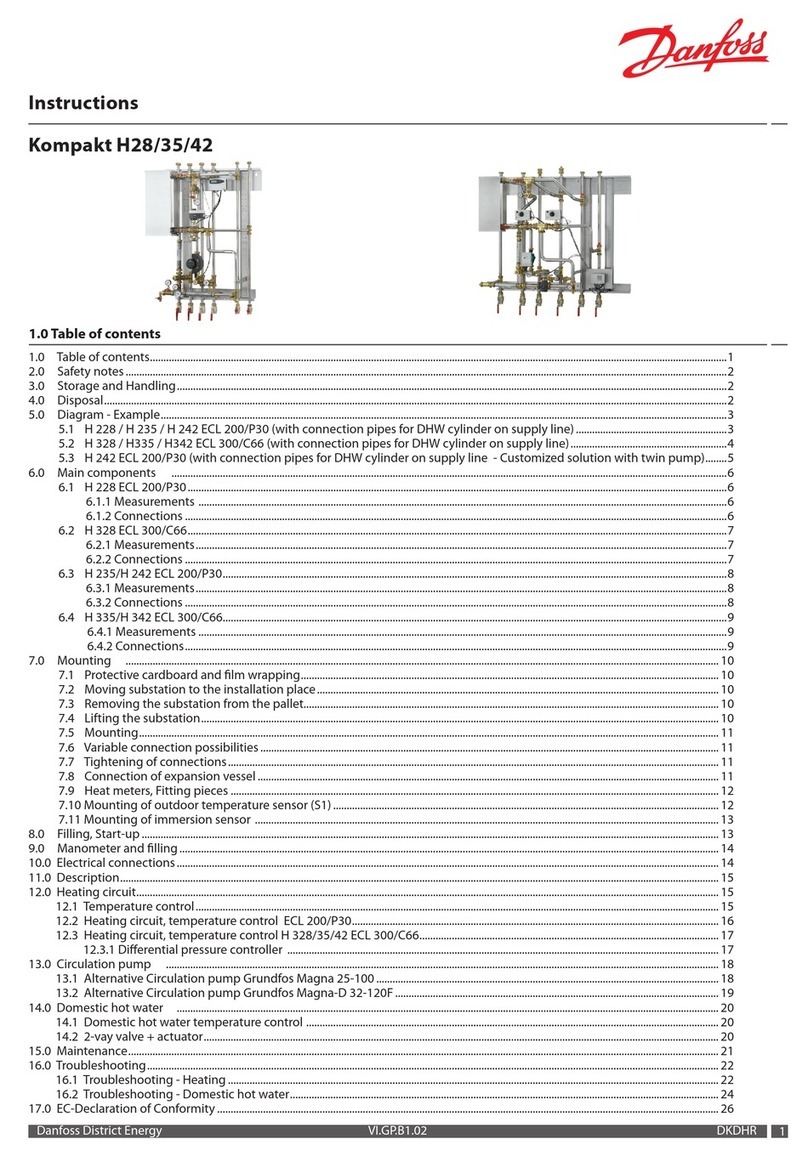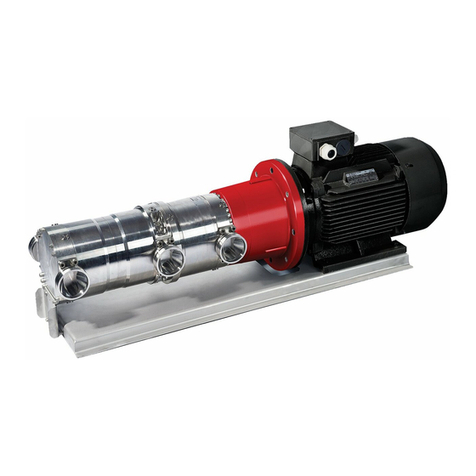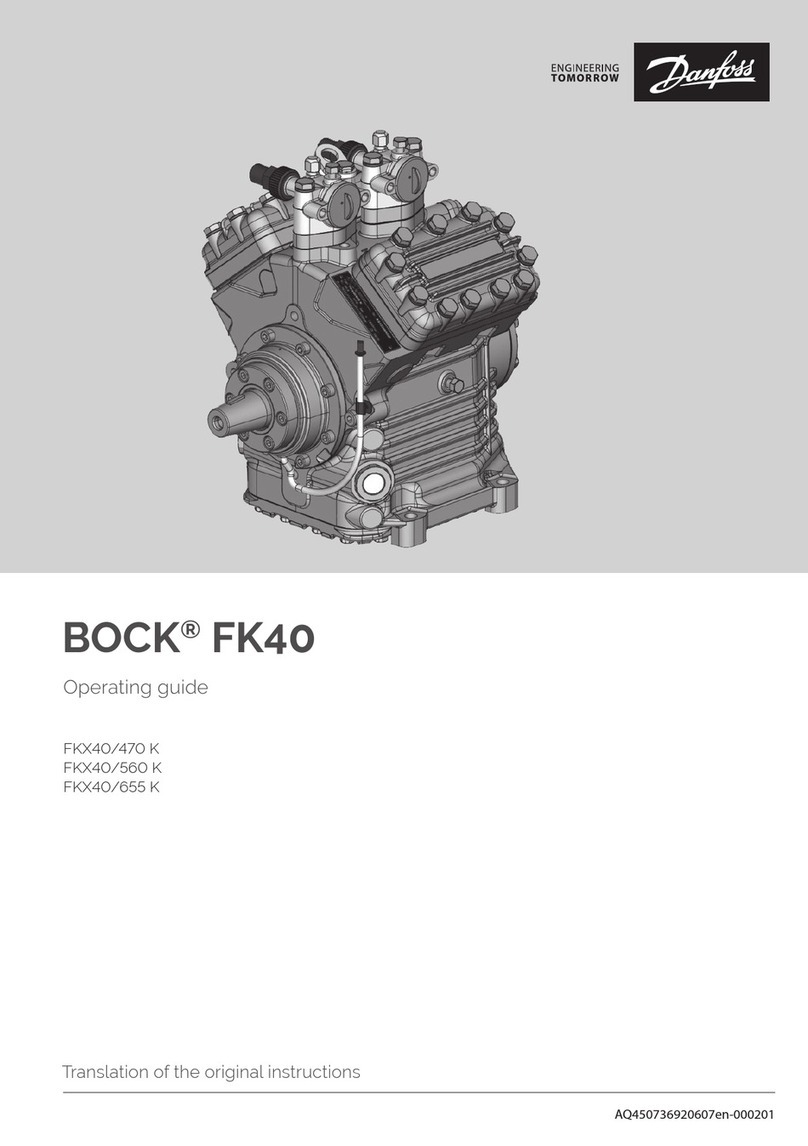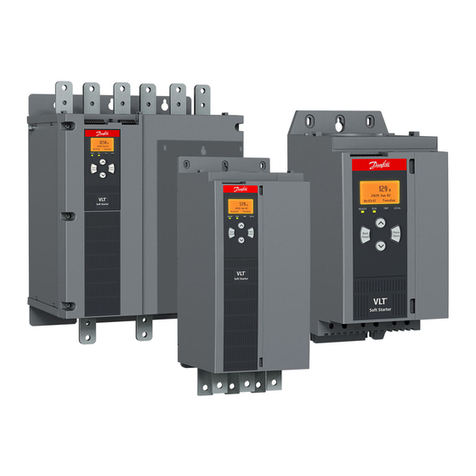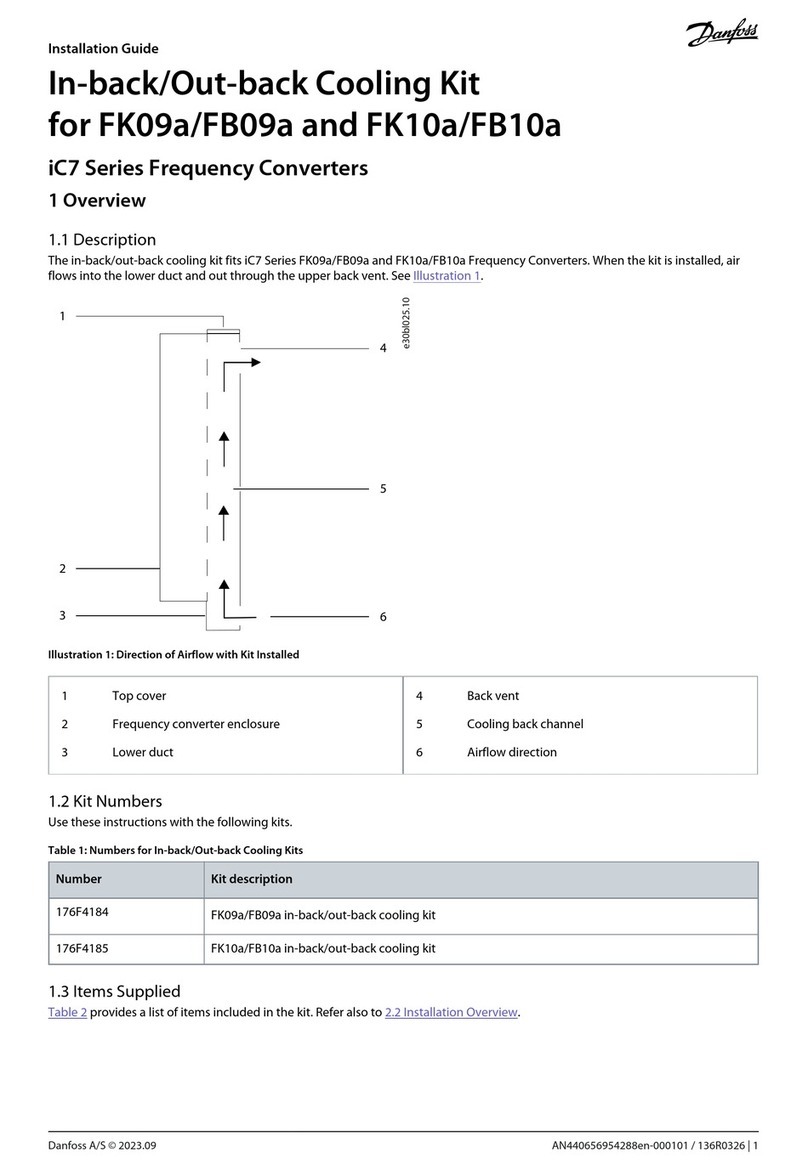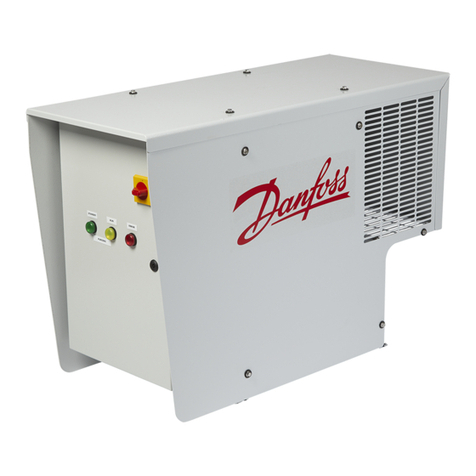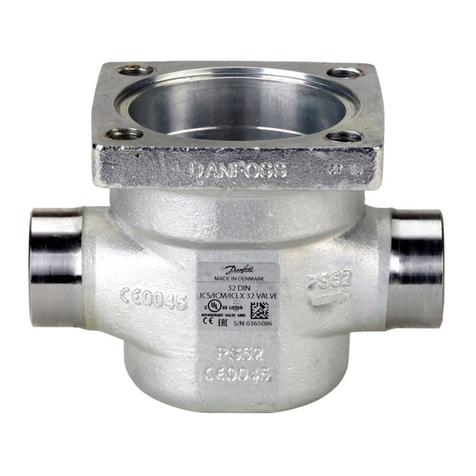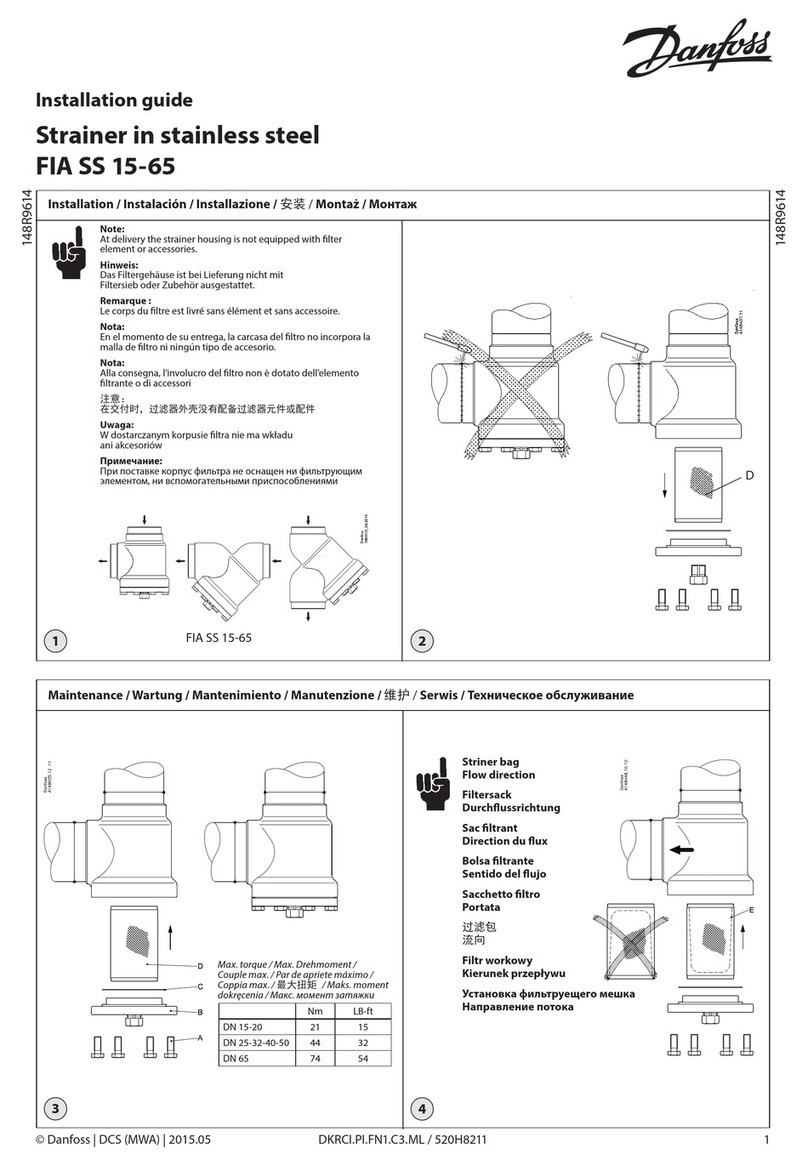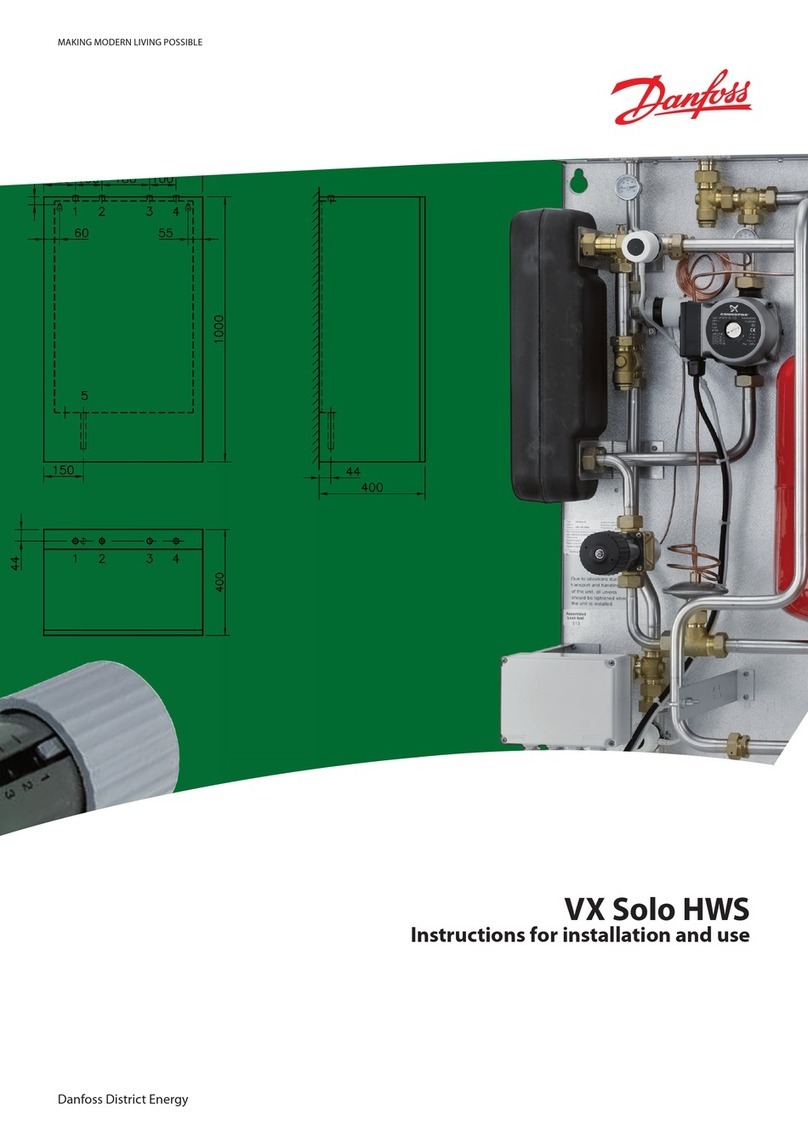
© Danfoss | DCS (CC) | 2022.11
Instructions
2 | AN433834055224en-010101
5 – Leak detection
Never pressurize the circuit with oxygen
or dry air. This could cause fire or explosion.
• Do not use dye for leak detection.
• Perform a leak detection test on the
complete system.
• The maximum test pressure is 32 bar.
• When a leak is discovered, repair the leak
and repeat the leak detection.
6 – Vacuum dehydration
• Never use the compressor to evacuate the
system.
• Connect a vacuum pump to both the LP &
HP sides.
• Pull down the system under a vacuum of
500 μm Hg (0.67 mbar) absolute.
• Do not use a megohmmeter nor apply
power to the compressor while it is under
vacuum as this may cause internal damage.
7 – Electrical connections
• Switch off and isolate the main power
supply.
• Ensure that power supply cannot be
switched on during installation.
• All electrical components must be
selected as per local standards and unit
requirements.
• Refer to wiring diagram for electrical
connections details.
• Ensure that the power supply corresponds
to the unit characteristics and that the
power supply is stable (nominal voltage
±10% and nominal frequency ±2,5 Hz).
• Dimension the power supply cables
according to unit data for voltage and
current.
• Protect the power supply and ensure
correct earthing.
• Make the power supply according to local
standards and legal requirements.
• The unit is equipped with high and low
pressure switches, which directly cut the
power supply to the compressor in case of
activation.
• For units with a 3-phase compressor,
correct phase sequence for compressor
rotation direction shall be observed.
• Determine the phase sequence by using a
phase meter in order to establish the phase
orders of line phases L1, L2 and L3.
• Connect line phases L1, L2 and L3 to main
switch terminals T1, T2 and T3 respectively.
8 – Filling the system
• Wear protective stuff like goggles and
protective gloves.
• Never start the compressor under vacuum.
Keep the compressor switched off.
• Before charging the refrigerant, verify that
the oil level is between ¼ and ¾ on the
compressor oil sight glass. If additional oil
is required please refer to the compressors
label for type of oil.
• Use only the refrigerant for which the unit
is designed for.
• Fill the refrigerant in liquid phase into the
condenser or liquid receiver. Ensure a slow
charging of the system to 4 – 5 bar.
• Do not put liquid refrigerant through
suction line.
• It is not allowed to mix additives with the
oil and/or refrigerant
• The remaining charge is done until the
installation has reached a level of stable
nominal condition during operation.
• Never leave the filling cylinder connected
to the circuit.
9 – Verification before commissioning
Use safety devices such as safety pressure
switch and mechanical relief valve in
compliance with both generally and locally
applicable regulations and safety standards.
Ensure that they are operational and
properly set.
Check that the settings of high-pressure
switches and relief valves don’t exceed the
maximum service pressure of any system
component.
• Verify that all electrical connections are
properly fastened and in compliance with
local regulations.
• When a crankcase heater is required, it
must be energized at least 12 hours before
initial start- up and start-up after prolonged
shut-down period.
10 – Start-up
• Never start the unit when no refrigerant is
charged.
• All service valves must be in the open
position.
• Check compliance between unit and
power supply.
• Check that the crankcase heater is working.
• Check that the fan can rotate freely.
• Check that the protection sheet has been
removed from the backside of condenser.
• Balance the HP/LP pressure.
• Energize the unit. It must start promptly.
If the compressor does not start, check
wiring conformity, voltage on terminals
and sequence phase.
• Eventual reverse rotation of a 3-phase
compressor can be detected by following
phenomena; unit doesn’t start, the
compressor doesn’t build up pressure,
it has abnormally high sound level and
abnormally low power consumption. In
such case, shut down the unit immediately
and connect the phases to their proper
terminals.
• If the rotation direction is correct the low
pressure indication on the low pressure
gauge shall show a declining pressure and
the high pressure indication on the high
pressure gauge shall show an increasing
pressure.
11 – Check with running unit
• Check the fan rotation direction. Air must
flow from the condenser towards the fan.
• Check current draw and voltage.
• Check suction superheat to reduce risk of
slugging.
• When a sight glass is provided observe the
oil level at start and during operation to
confirm that the oil level remains visible.
• Respect the operating limits.
• Check all tubes for abnormal vibration.
Movements in excess of 1.5 mm require
corrective measures such as tube brackets.
• When needed, additional refrigerant in
liquid phase may be added in the low-
pressure side as far away as possible from
the compressor. The compressor must be
operating during this process.
• Do not overcharge the system.
• Never release refrigerant to atmosphere.
• Before leaving the installation site, carry
out a general installation inspection
regarding cleanliness, noise and leak
detection.
• Record type and amount of refrigerant
charge as well as operating conditions as a
reference for future inspections.
12 – Maintenance
Always switch off the unit at main switch
before remove fan panel.
Internal pressure and surface temperature
are dangerous and may cause permanent
injury. Maintenance operators and installers
require appropriate skills and tools. Tubing
temperature may exceed 100°C and can
cause severe burns.
Ensure that periodic service inspections to
ensure system reliability and as required by
local regulations are performed.
To prevent system related problems,
following Periodic maintenance is
recommended:
• Verify that safety devices are operational
and properly set.
• Ensure that the system is leak tight.
• Check the compressor current draw.
• Confirm that the system is operating in a
way consistent with previous maintenance
records and ambient conditions.
• Check that all electrical connections are still
adequately fastened.
• Keeptheunitcleanandverifytheabsenceof
rust and oxidation on the unit components,
tubes and electrical connections.
The condenser must be checked at least
once a year for clogging and be cleaned if
deemed necessary. Access to the internal
side of the condenser takes place through
the fan panel. Microchannel coils tend to
accumulate dirt on the surface rather than
inside, which makes them easier to clean
than fin-&-tube coils.
